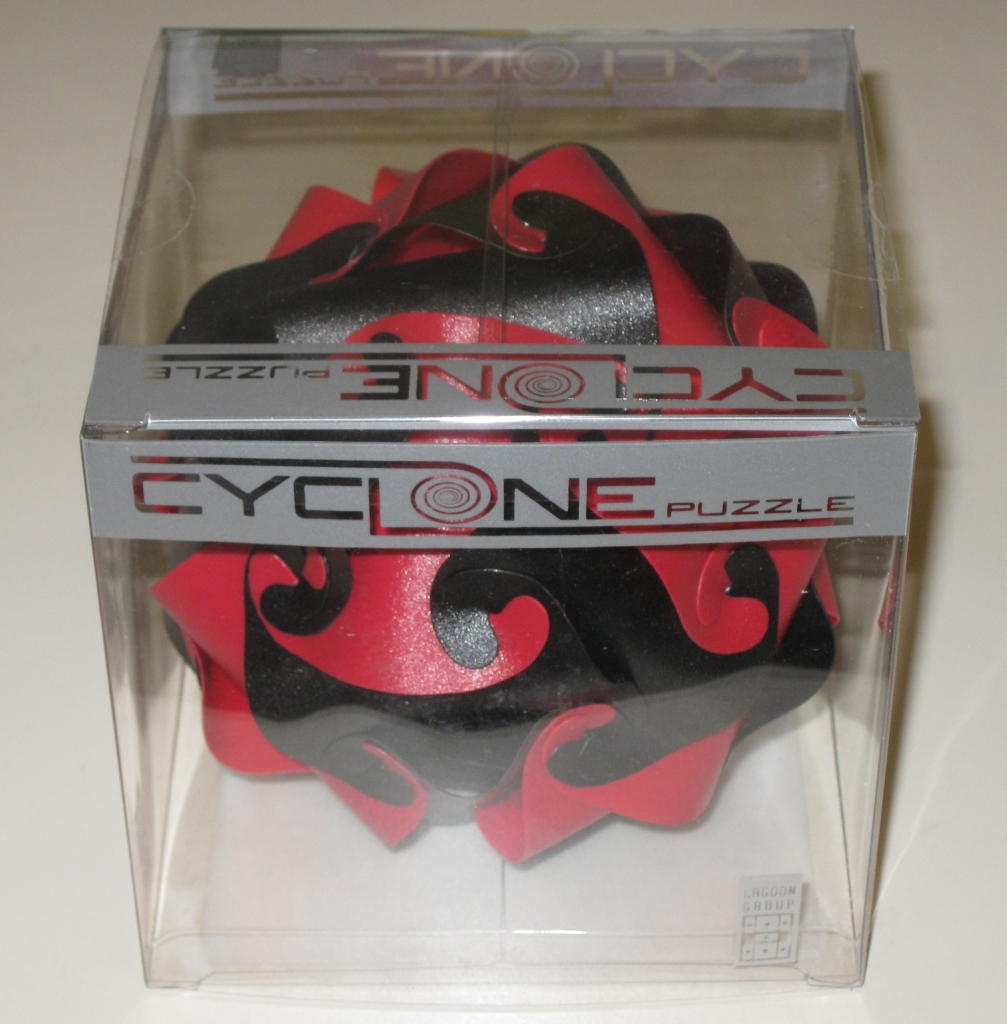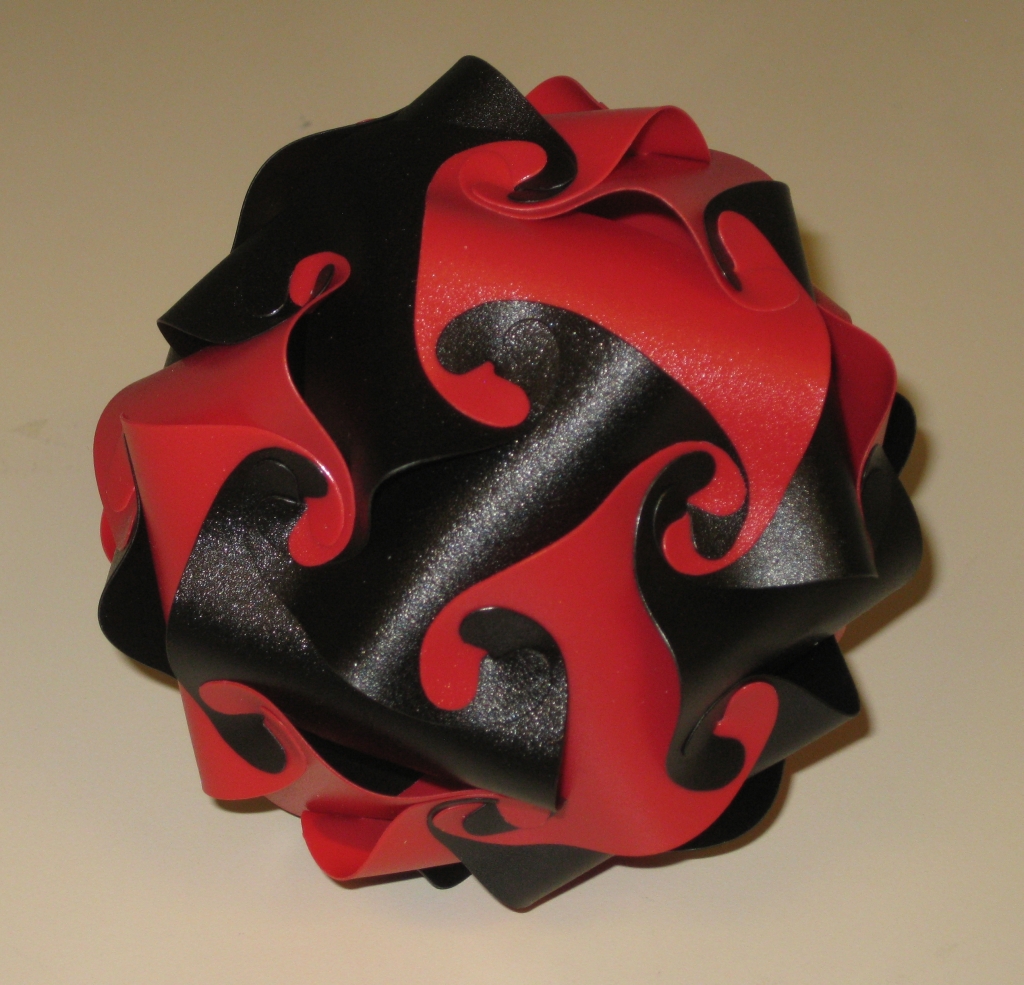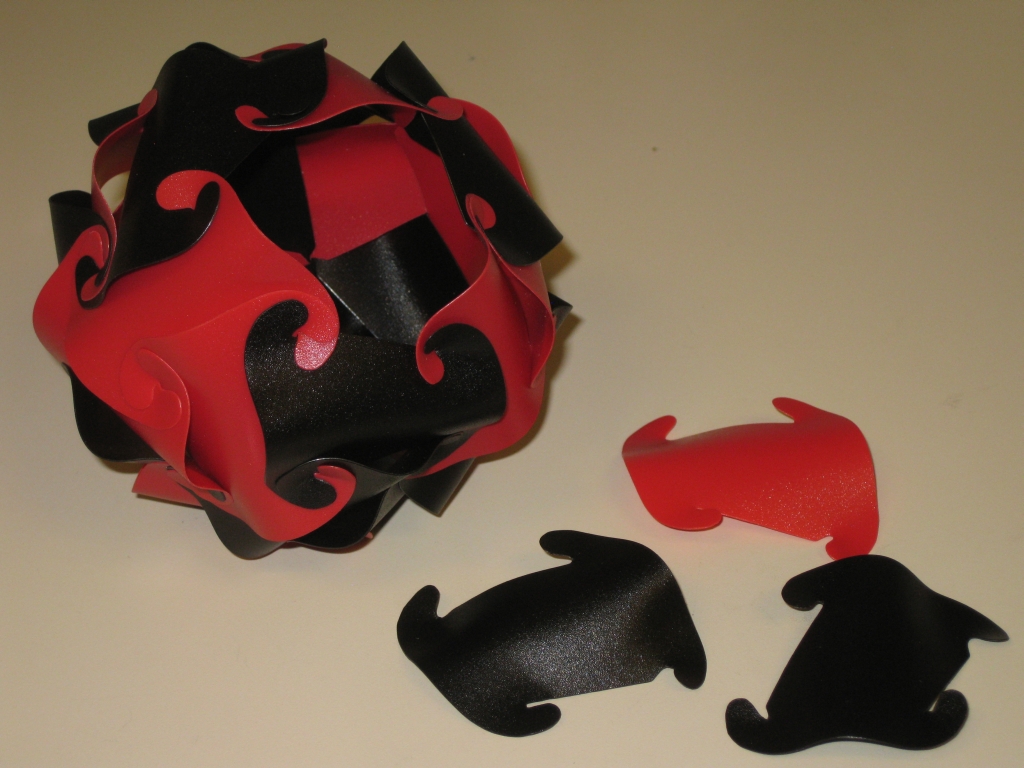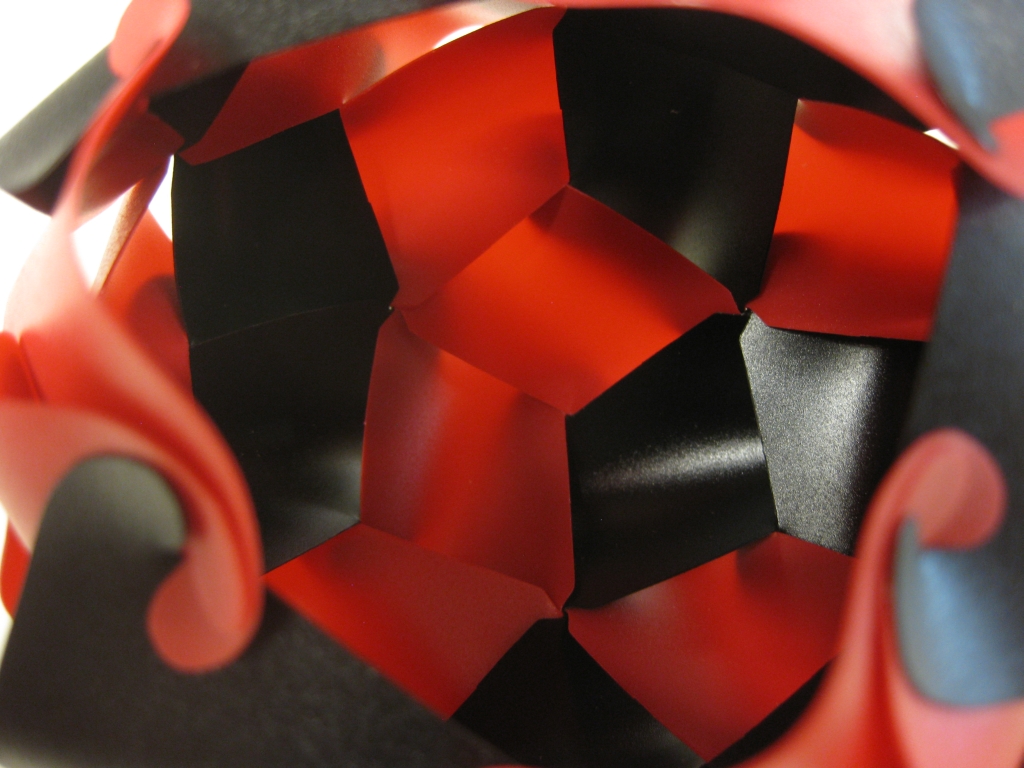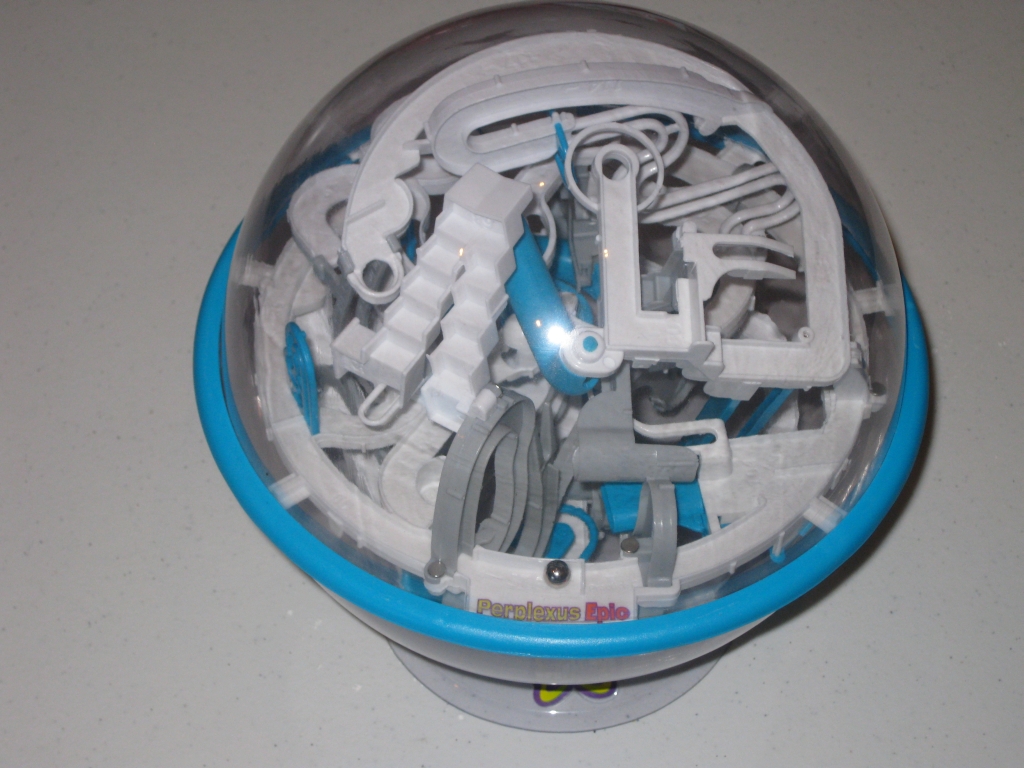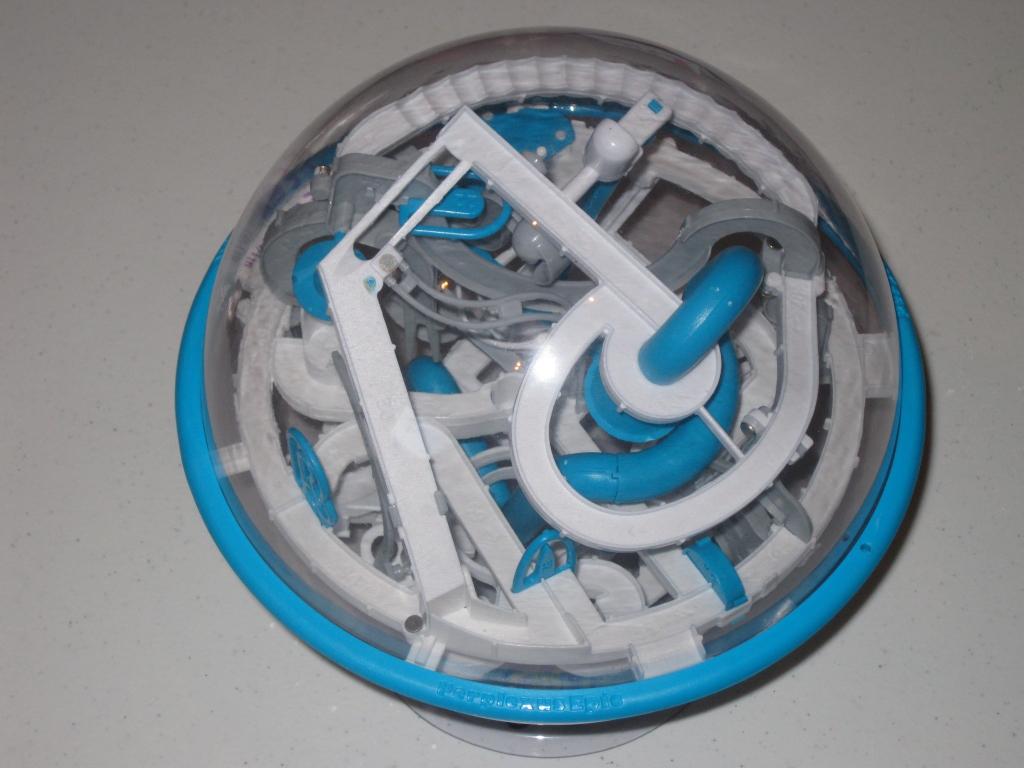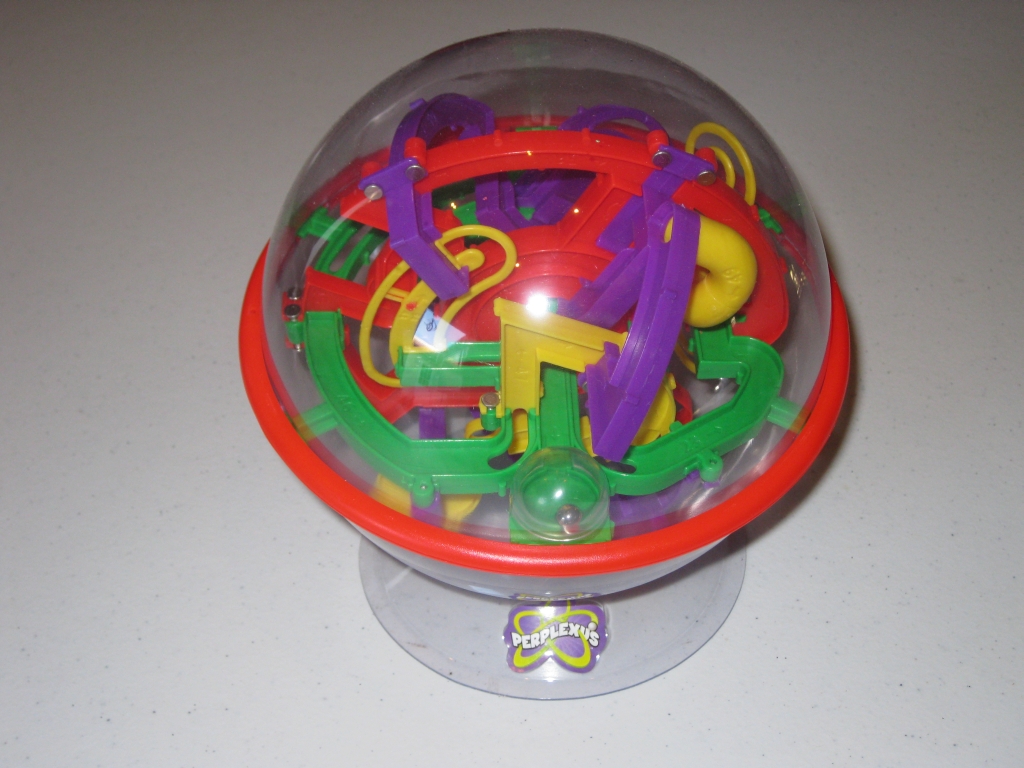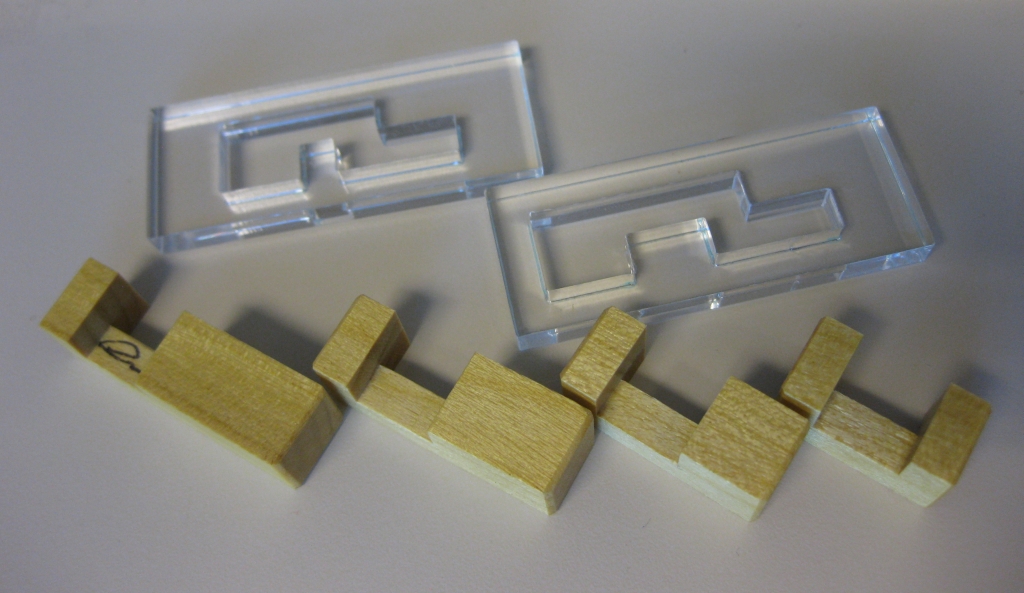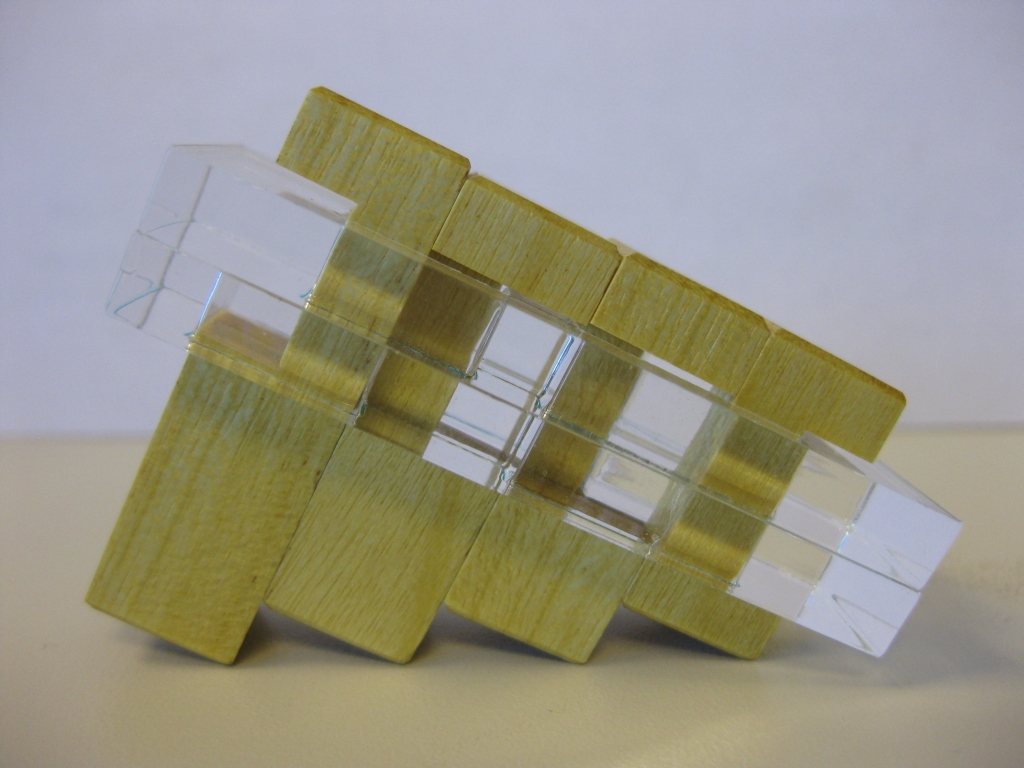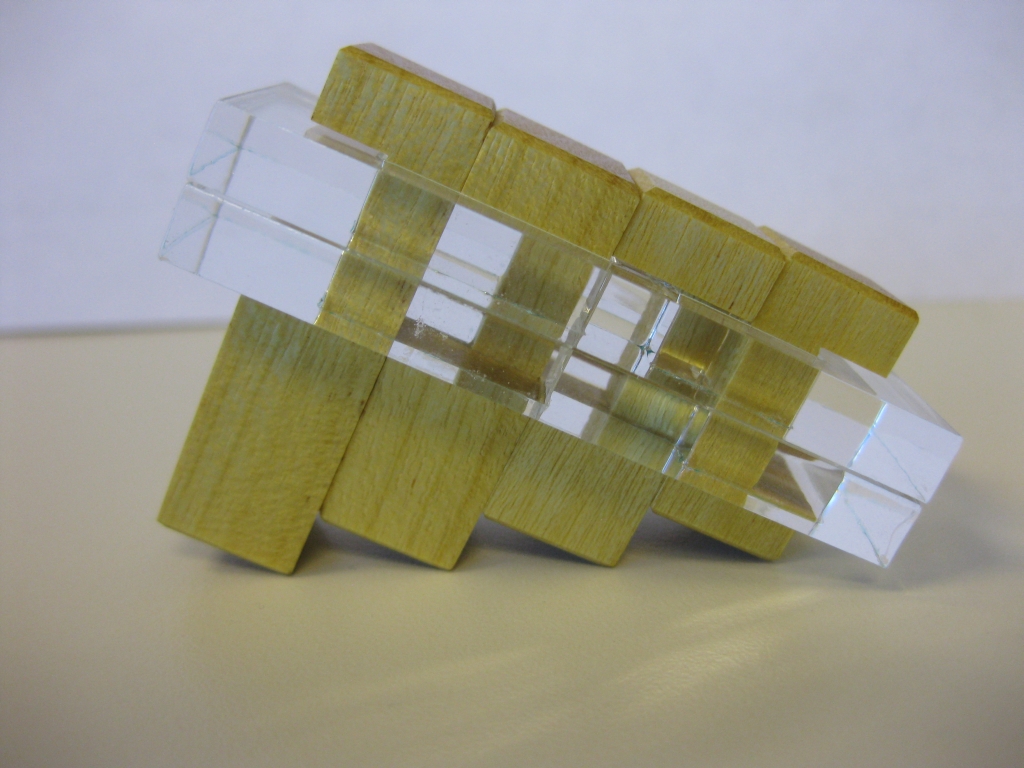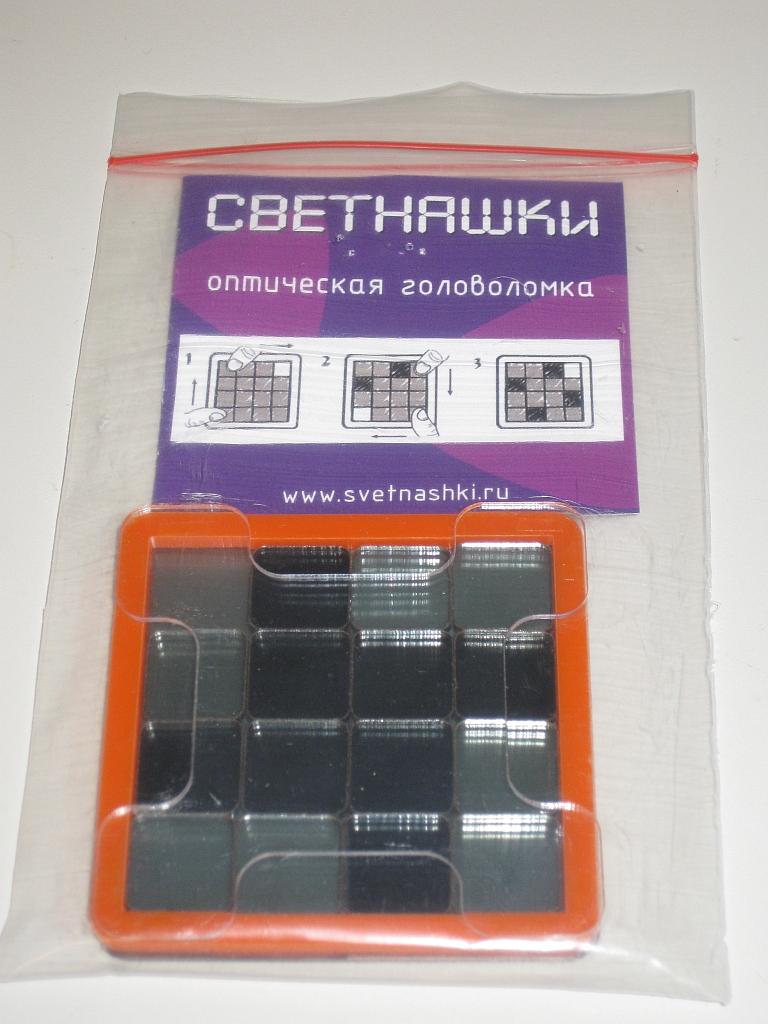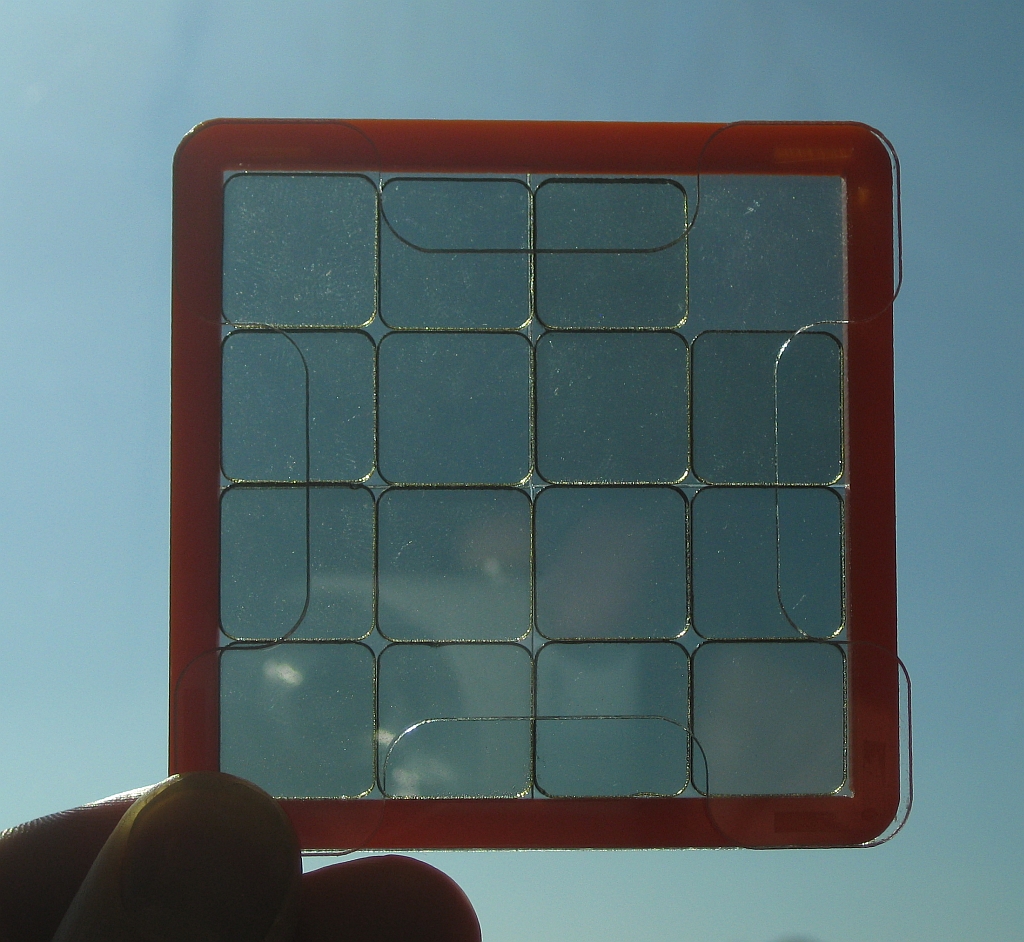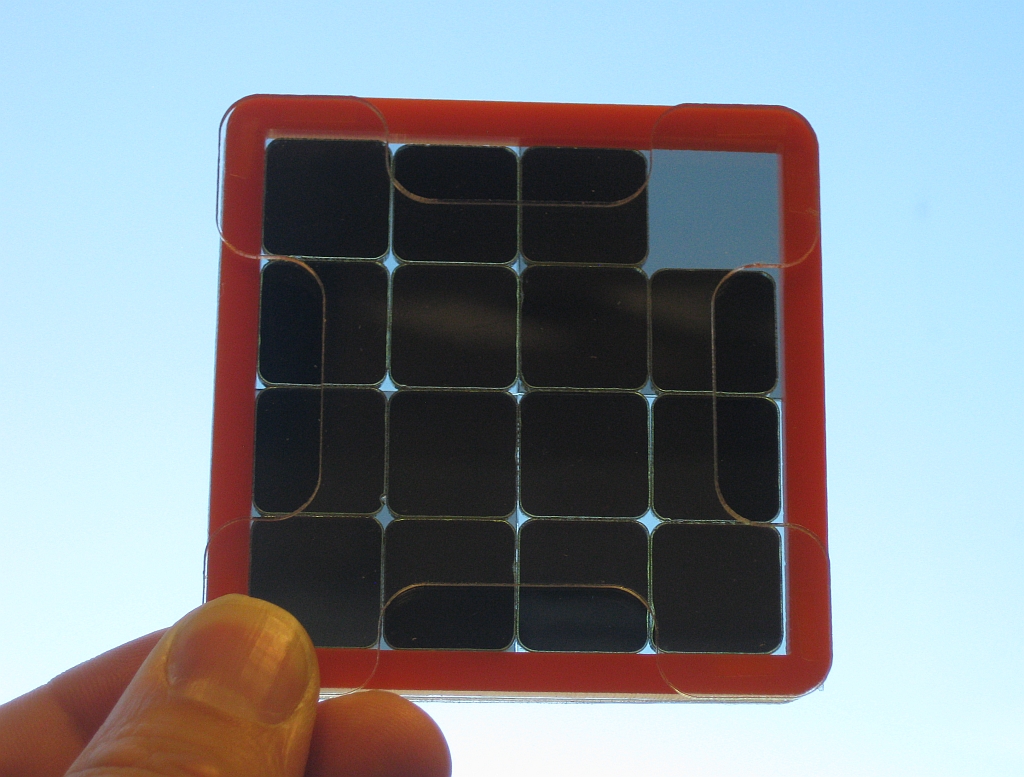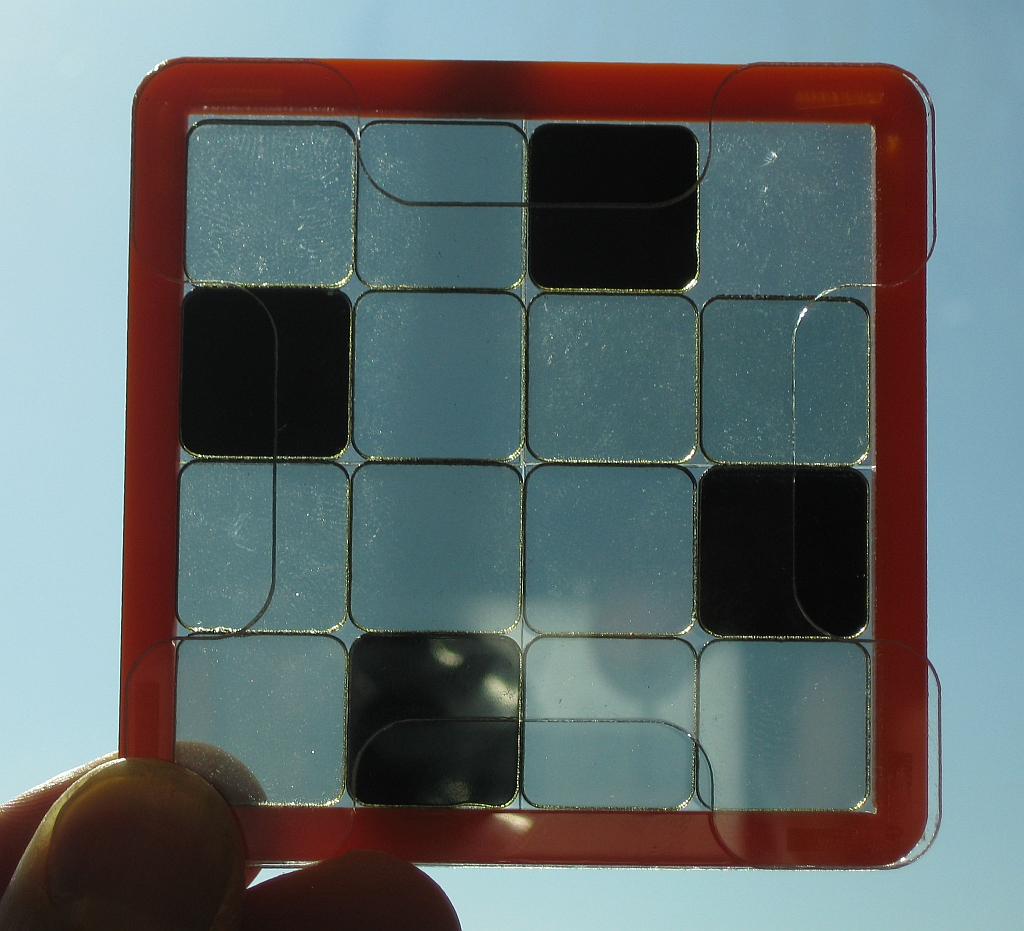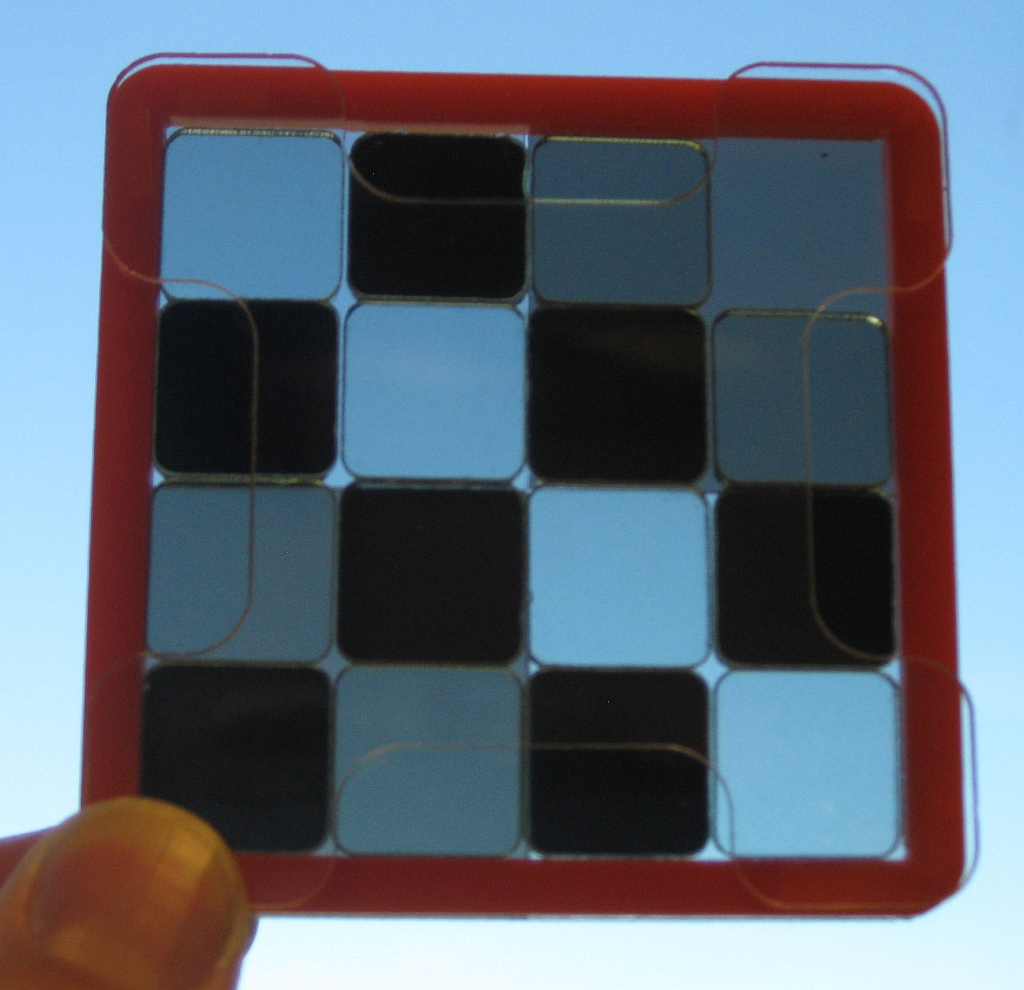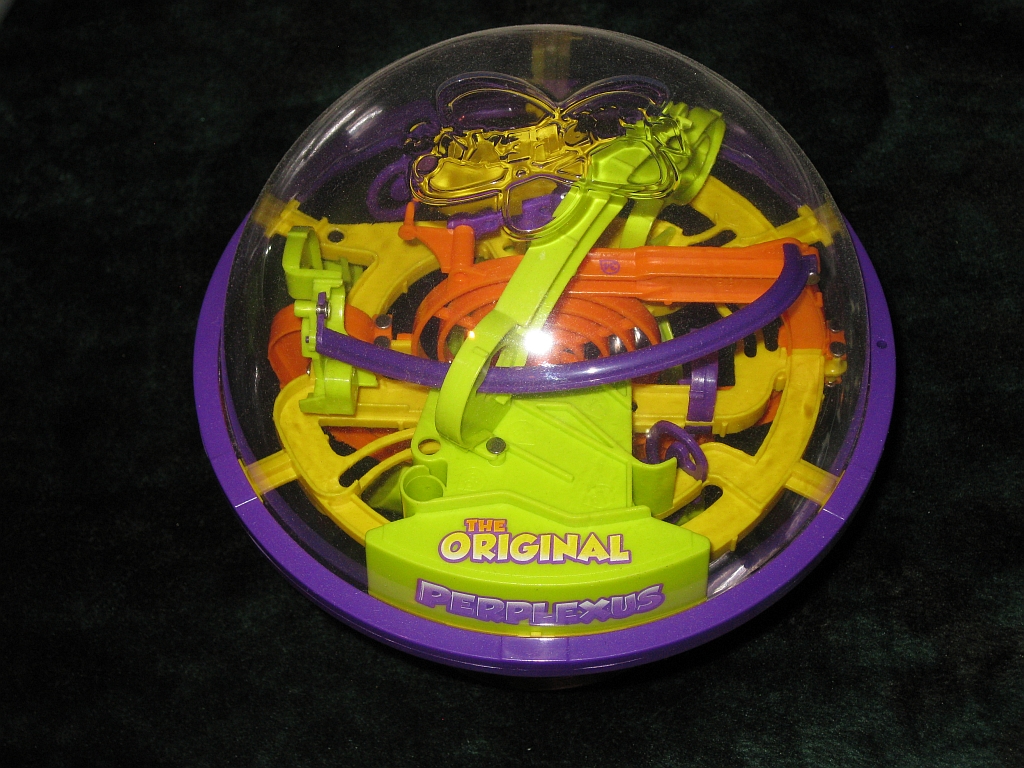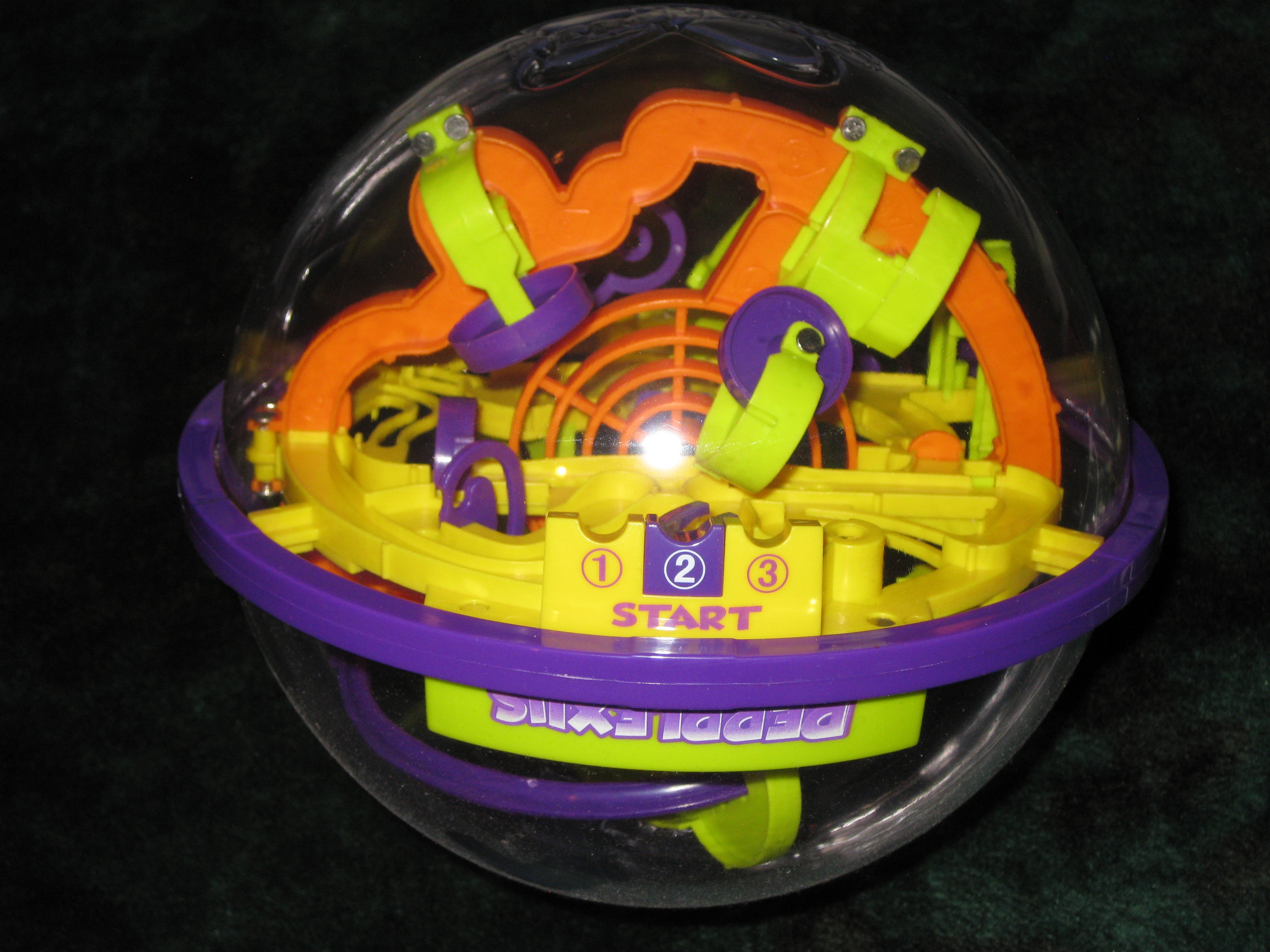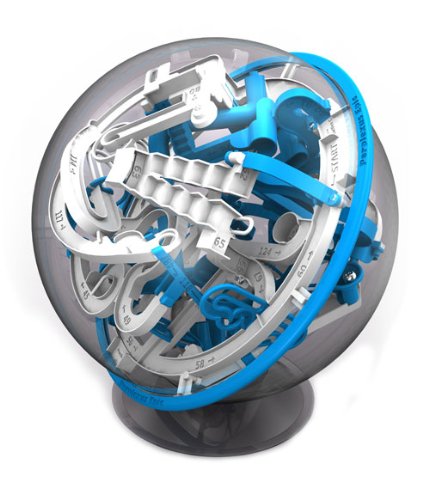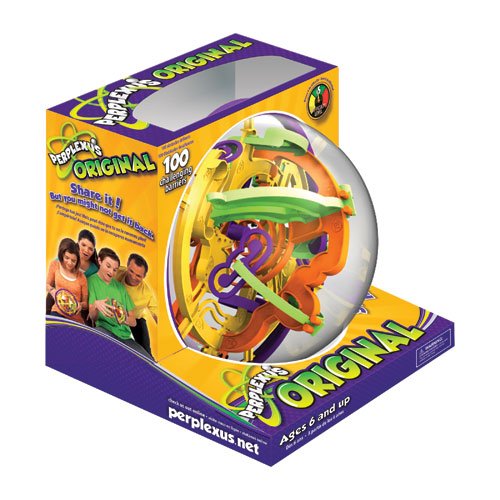The Cyclone puzzle is a fun and very cheap plastic puzzle, made from 30 thin, flexible plastic pieces, which combine together into a tricontrahedron, and is based on the original lamp from Holger Strøm. To find out more about the original have a look at the IQ Light site. I got my copy of the puzzle in Black and Red from Puzzle Master, but there are lots of colour combinations available. This version is produced by The Lagoon Group
The puzzles comes in a simple plastic box with the instructions “Can you take apart this devilishly difficult Cyclone Puzzle and then Rebuild it? Take our word for it, this is not a quick puzzle to master!” The box is fairly plain, but the silver banks which outline the text really make it stand out, and it seems to set the puzzle off very nicely. The contrast between the Red, Black and Silver really works, giving a very classy look to the whole package.
Taking it out of the box, it’s clear that the structure is very stable. Despite each of the individual pieces being very thin and flexible, once they are joined in the tricontrahedron shape, they have a lot of strength. Removing the first piece is a challenge, as you don’t know quite how strong the pieces are, and you do need to pull and wiggle the pieces with reasonable force to get the tabs to separate. There really is no need to worry though as the plastic is tough, and will take a fair amount of abuse. Once the first piece is out, removing the rest is much easier. While the structure doesn’t fall apart, there’s less tension in the rest of the pieces, so you’ll find the rest of the tabs come apart with relative ease.
As I mentioned before, each of the thirty pieces in the puzzle are identical, so with a pile of pieces in front of you, it shouldn’t be too hard to put this back together. Puzzle Master rate this as 8/10 – Demanding, but I didn’t find it overly difficult, as the pattern to assemble repeats as you progress, so it’s a fairly fun puzzle to take apart and solve. The difficult part comes in the initial assembly steps being able to keep the pieces in place. If you are stuck, there’s a solution here. Depending on your preference, you can build it with all similar colours together or in an alternating pattern. Either way you’ll end up with a good looking sculpture. Personally I think I prefer the contrast with the alternating colours.
As you’re rebuilding, the inside looks every bit as good as the outside, with the faces of the tricontrahedron easily identifiable.
When I was invited to my first Puzzle Party at Stan Isaacs house, last year, as part of the tour of his puzzle collection, Stan actually has one of the original lamps hanging in his living room. After seeing it, I had to pick up a copy myself. I may not have the lamp, but this is a really good second place. And to be honest, I’m tempted to get a small LED bulb and put it inside this puzzle. It might not let out much light, but it would be fun.
Oli also reviewed this puzzle a while back, so have a look at his review too.
As a very cheap puzzle, and a fun build, this is a good one to have in your collection. The kids will enjoy playing with it (if they like this sort of thing) and if not, it will look good hanging from your ceiling.
